
What happens to your waste?
You said “EPR”?
The Extended Producer Responsibility (EPR) is based on the principle of “polluter pays”. This system implies that economic actors (producers, distributors, importers) are responsible for the entire life cycle of the products they put on the market, from their (eco-)design to the end of their life.
In practice, this means that producers, distributors, importers are subject to different regulatory obligations that vary according to the waste stream produced: data reporting, collection and treatment objectives, take-back obligation which consists of taking back or having taken back at their expense the waste linked to the products they put on the market.
Two logos and a bit of confusion!

This logo is the symbol of recycling - not to be confused with the "green dot" logo - and indicates that the product or packaging used is recyclable. If it is accompanied by a percentage, it means that the product or packaging contains recycled materials (the percentage is the proportion of the recycled quantity in the product/packaging).

This “green dot” logo means that a company that puts a product on the market contributes only to the financing of the selective collection, sorting and recycling of household packaging or assimilated packaging. This logo does not say anything about whether the product in question is recyclable. It is not a sorting instruction either.
Practical information
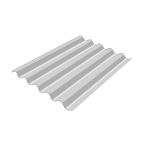
Asbestos – cement

Asbestos – cement
Technical landfill
Waste containing asbestos - cement is considered hazardous to health. It is packed in regulatory bags to prevent the spread of dust. It is sent to a class 2 landfill site.
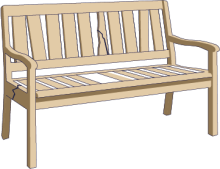
Wood

Wood
Wood A (pallet) → reuse and recycling
Wood B → recycling
Wood C → incineration
There are several categories of wood collected by Bruxelles-Propreté.
The first category concerns untreated wood (wood A (pallet)) and the treated wood (wood B).
Wood A (pallet) is reused (new pallet) or recycled to make chipboard. Wood B is either recycled to make new materials (chipboard), or recovered as energy via a biomass process.
The second category is treated wood waste (wood C).
This refers to impregnated, contaminated and/or hazardous wood waste. Given its hazardous nature, wood C is not recycled. It is recovered for energy purposes via a biomass process.

Gas cylinders

Gas cylinders
Recycling
The cylinders are emptied, recovering any gas they may contain, and then recycled.
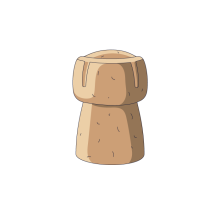
Corks

Corks
Recycling
The corks are sent to private collectors where they are shredded and then used in the construction industry as thermal or sound insulation.
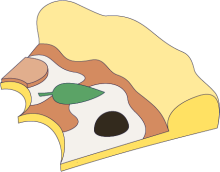
Food waste

Food waste
Recycling
Food waste is sent to a biomethanization center, where it undergoes a series of biological degradation operations in the absence of oxygen (anaerobic). The biomethanization process produces biogas and digestate. Biogas is a mixture of gases (methane and carbon dioxide) and water vapor. Digestate is the liquid residue containing undegraded organic matter. The biogas is used to generate electricity, while the digestate is recycled as compost.
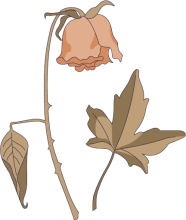
Garden waste

Garden waste
Recycling
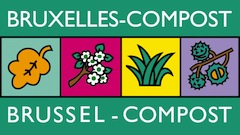
Garden waste is taken to the composting center of Bruxelles-Compost (a subsidiary of Bruxelles-Propreté), where it is transformed into compost. This compost is then sold for use in the agricultural sector, in private/shared vegetable gardens, or in the development of public spaces.
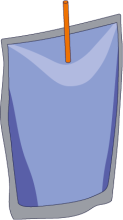
Residual waste

Residual waste
Energy recovery

The residual waste collected is taken to the incinerator operated by Bruxelles-énergie (a subsidiary of Bruxelles-Propreté). This incinerated residual waste is used to produce electricity. Heat from the Brussels-énergie incinerator is also used to supply the heating network that heats the Domaine Royal de Laeken.
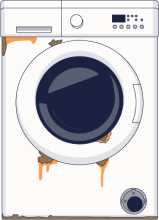
WEEE (Waste Electrical and Electronic Equipment)

WEEE (Waste Electrical and Electronic Equipment)
Reuse and recycling

WEEE is collected by the management organization Recupel. After consolidation in a transshipment center, where it is sorted according to its re-use potential, it is sent to dismantling centers for dismantling. Parts containing harmful components (mercury, cadmium, cooling gases, PCBs, etc.) are treated separately and neutralized. Materials such as iron, plastic, glass, metals etc. are reused as raw materials in the manufacture of new products.
Think about Recupel for:
Large electrical and electronic appliances:
Small electronics and bulbs:
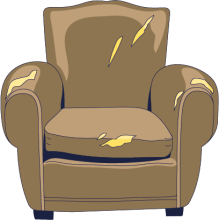
Bulky goods (stationary Recypark)

Bulky goods (stationary Recypark)
Mostly energy recovery
All waste that cannot be disposed in a selective collection fraction in the Recypark is stored in the "bulky" container. This residual Recypark fraction is therefore of poorer quality and is mostly sent for incineration with energy recovery. Hence the importance of sorting our waste to reduce this fraction, or even better, avoiding producing this type of waste by adapting our consumption patterns.

On-site collection of bulky items

On-site collection of bulky items
Recycling and energy recovery
Bulky waste is sent to private collectors to be sorted according to the materials it contains (e.g. wood, plastic, metals, etc.) and then either recycled or recovered in an energy recovery plant (e.g. incinerator with electricity production or supply to a heating network).
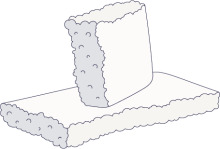
Styrofoam

Styrofoam
Recycling
Styrofoam is compacted and ground into small beads to be used in insulating materials.
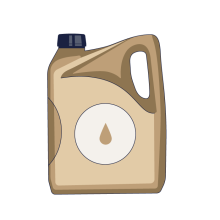
Mineral oils

Mineral oils
Recycling
Depending on their quality, mineral (motor) oils are either recycled as base oils for the production of new oils (in the majority of cases), or used as industrial fuel.
Find out more about Valorlub.
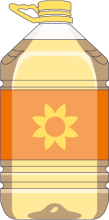
Vegetable oils

Vegetable oils
Recycling
Used vegetable oils are purified and then recycled as biofuel. After treatment, they can also be used in the composition of detergents, lubricants and soaps.
Find out more about Valorfrit.
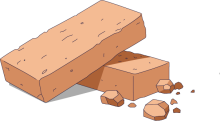
Inerts (bricks/gravel)

Inerts (bricks/gravel)
Recycling
Inert waste is sent to recycling centers where it is sorted and crushed to be recycled, for example, into building or foundation materials.
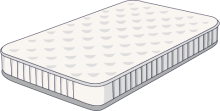
Mattresses

Mattresses
Recycling and energy recovery
Mattresses are dismantled by specialized companies. In general, 4 main components emerge from mattresses: polyurethane (PUR), latex, metal and textile. These materials are then transported to processors to be recycled or used as raw materials in new products (sports mats, insulation material, etc.).
Find out more about Valumat.
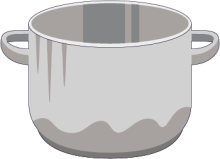
Metals

Metals
Recycling
Metals are sent to steelworks, where they are melted down and used to make new metal materials/objects.

Neons / Bulbs

Neons / Bulbs
Recycling

Neon lights and light bulbs are taken back by the management organization Recupel. How they are processed depends on their quality and shape. They are sorted according to the quality of the glass, the type of fluorescent powder and the metal they contain.
Reusable fluorescent powder and finely crushed, good-quality glass are used as raw materials for the production of new bulbs.
Lower-quality glass will be sent to other sources, such as the glass wool industry, incinerators and melting furnaces. The metal is recycled and the fluorescent powder that cannot be recycled is eliminated from our environment in an environmentally-friendly way.
Think about Recupel for:
Large electrical and electronic appliances:
Small electronics and bulbs:
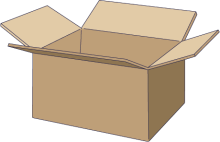
Paper and cardboard

Paper and cardboard
Recyclage


Paper / cardboard waste are taken to the Recyclis sorting center (a subsidiary of Bruxelles-Propreté), where they are sorted. They are then sent to paper mills or recyclers for reuse as raw materials in the manufacture of newspaper, recycled paper, cardboard boxes and bags, for example.
Further information from the management organization Fost Plus.
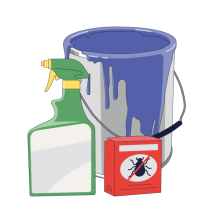
Small household chemical waste

Small household chemical waste
Recycling and energy recovery
Small household chemical waste are taken back by approved companies for reuse as a substitute fuel for coal, for example, or for incineration in special furnaces with energy recovery. Packaging containing this type of waste is neutralized and purified for recycling (plastics, metals).
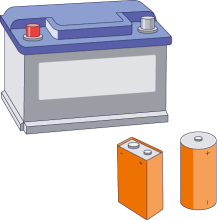
Batteries and accumulators

Batteries and accumulators
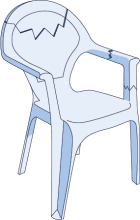
Hard plastics

Hard plastics
Recycling
Hard plastics are crushed, washed and separated according to material quality. These plastics are then transformed and used as raw materials in various products: pipes, pallets, garden furniture, composters, etc.
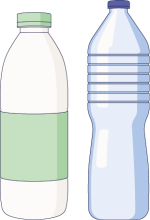
PMD

PMD
Recyclage
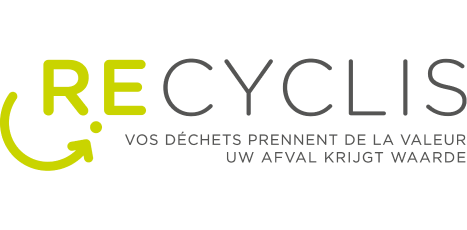

The PMC collected are grouped together at the Recyclis site (a subsidiary of Bruxelles-Propreté). They are then taken to a sorting center where they are sorted, washed and crushed.
Plastic packaging is transformed into ready-to-use pellets or granulates. These pellets and granulates are then melted down to serve as raw materials for the manufacture of new products, packaging or objects.
Metal packaging is sorted according to its physical properties (steel/aluminium). These metals are then purified and remelted in large steel furnaces to form semi-finished products (metal bars, cylinders or blocks). These are intended for further use in various sectors such as transport, construction or packaging.
Beverage cardboard packaging is made from 3 separately recycled materials:
- Cardboard is recycled and used in the manufacture of absorbent paper or solid cardboard packaging.
- Plastic (HDPE) is recycled and used in the manufacture of new packaging.
- PolyAl (a combination of a layer of plastic (LDPE) and aluminum found on the inside and outside of beverage cardboard packaging) is a strong, watertight material that is also UV-resistant. PolyAl is used, for example, in the production of sheet metal for the construction industry or as a container for the food sector.
Further information from the management organization Fost Plus
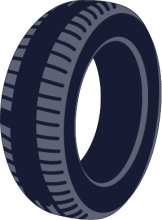
Tyres

Tyres
Recycling
Used tires still in good condition are retreaded and resold on the market. End-of-life tires are shredded and reused in the manufacture of rubber materials.
Further information from the management organization Recytyre.
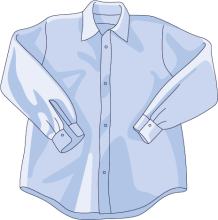
Textile

Textile
Reuse, recycling and energy recovery
The textiles collected are sent to second-hand outlets such as Les Petits Riens in Brussels, where they are sorted. Pieces in good condition are resold second-hand. Those in poor condition are transformed into rags. Those too damaged to give them a second life are incinerated.
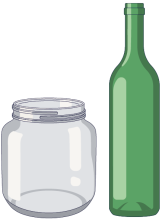
Food glass

Food glass
Recycling
Food glass has the extraordinary ability to be recycled ad infinitum. Collected food glass is transferred to specialized recycling plants where it is broken into small fragments, purified and then melted down to be used again in the manufacture of new bottles or jars.
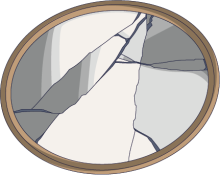
Flat glass

Flat glass
Recycling
Flat glass is 100% recycled. Once impurities have been removed, it is crushed, melted and used again as a raw material in various glass products (flat glass, hollow glass, cellular glass, glass wool).
